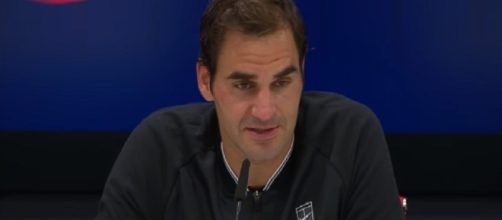For a tennis addict, the name of Roger Federer has been a constant point during the last fifteen years or so. For those who have kept a close eye on tennis, it may seem that a whole eternity has passed since he made his debut on the grand stage. It was the season of 2001, basically 16 years ago when a young player from Switzerland at the time stunned Pete Sampras in the fourth round at Wimbledon. Having a short setback the very next season (2002) he bounced back in 2003 to clinch the first Grand Slam of his career. And that was the moment when a tennis legend was born.
As a whole, Federer has assimilated a unique flurry of attributes. HIs sharpness, aggressiveness, smartness or fitness has been in the upper drawer for so long.
Roger Federer is more than a tennis player; he is a self-learning autonomous mechanism
Aged 36, the Swiss tennis superstar has never stopped from pushing himself beyond the pre-existent boundaries. One year ago there were serious concerns about his future as a professional player. Having to deal with a knee surgery and a grueling recovery (6 months), he resumed playing back in January. It all went down as one of the greatest comeback stories in tennis history as a vintage-like Federer clinched another Australian Open title in Melbourne.
That final had a special catch with Rafael Nadal, another tennis great who had to skip serious chunks of 2016 season occupied the other available slot on Rod Laver Arena.
Trying to cement his success from Melbourne, Federer went on and dug deeper clinching the Sunshine Double (Indian Wells + Miami). Skipping the clay court swing in Europe helped Federer to regain some of the freshness he previously had in Australia. Moving forward towards the grass court season, he went on to win the event in Halle and then made a fairytale run at Wimbledon, winning the title without dropping a single set throughout the whole tournament.
Although people expected him to do further damages during the US Open Series, a minor back injury and a lost of momentum stopped his both bids in Montreal and US Open.
Seeing him winning two Majors in a matter of months is one more clue of his willingness to never stop learning new tactics. HIs weaponized backhand held the headlines during the Aussie run and then in Indian Wells and Miami.
What to expect from Federer in the closing stages of 2017
Currently ranked second in the world, he missed the chance to surpass Rafael Nadal at the summit. While Federer collapsed in the quarterfinals to Juan Martin del Potro, on the other side, the Spaniard went on to win his third US Open title and the first one since 2013.
Federer and Nadal will hold the headlines of the remaining part of 2017. Thus, the Swiss may want to take advantage of the opportunities that lie ahead.
Next year, in January, the heavy artillery of the ATP circuit is expected to make its comeback. Djokovic, Murray or Wawrinka will try to regain their slots. Moreover, the NextGen led by Alexander Zvevev, Borna Coric, Andrey Rublev or Denis Shapovalov will be there as well.


